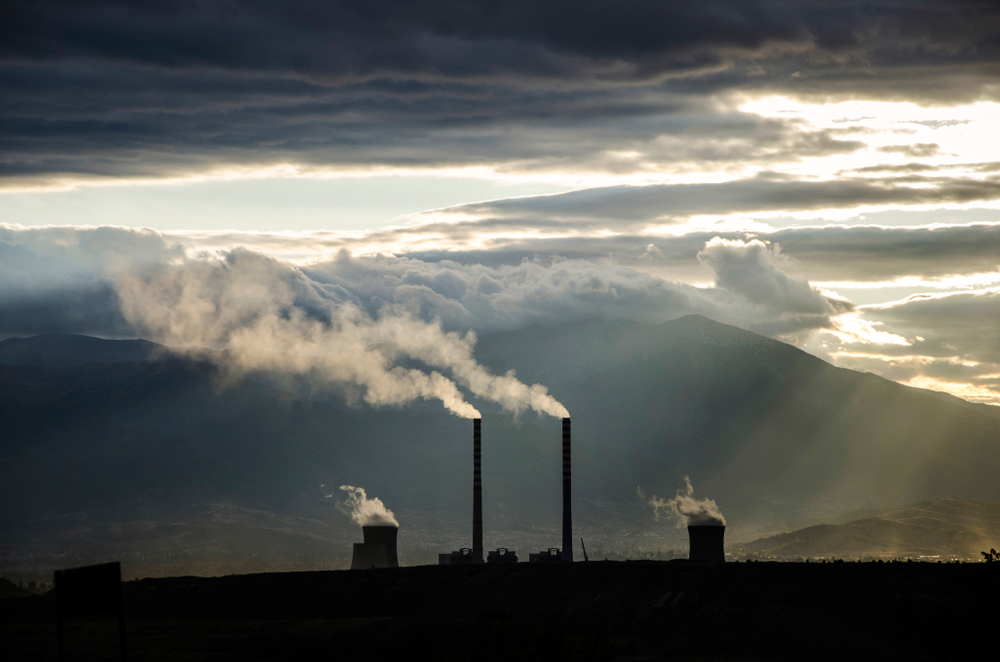
Thermal power plant in sunset.Bitola district, North Macedonia © Masha Pavlovic/Shutterstock
The global energy crisis has exposed all the difficulties of North Macedonia, with its limited and obsolete production system. Renewing it and bringing it up to date is one of the main challenges for the future of the country
When the prices for electricity on the world rose by hundreds of Euros per megawatt hour, the alarm went on in North Macedonia. The country, although it has less than two million inhabitants, has to rely heavily on export.
Political leaders are talking about starting the production of own energy as soon as possible, maybe three decades late. So far, the country has mostly relied on lignite and other fuels that need to be replaced with renewable resources. The connection with Greece could also provide a source of liquid gas.
Energy and state subsidies
Considering the limited possibilities for electricity production and the great need to import it, high prices emerged as a burning issue in a country where the average salary is currently around 500 Euros.
At the beginning of July, the country introduced a new price calculation system: the biggest novelty for citizens is therefore the introduction of four different tariffs for electricity consumption.
The government's Economic and Energy Council decided to subsidise primary and secondary schools all over the country, although education is a municipal competence.
This will also apply to all public healthcare institutions. In addition, over 70 companies with annual turnover up to two million Euros will receive subsidised electricity at one third of the market price. Subsidies for the payment of electricity bills are also provided for disadvantaged social categories.
The government also appeals for citizens to continue with domestic savings, since they equal savings for the state budget.
A system to be renovated
North Macedonia’s electricity production generally relies on the system established in the former Yugoslavia – several large thermal power plants on lignite, mainly devised to support heavy and black industry, and several large hydro-power plants.
Most of the country's electricity is produced by state company ESM: 85% from thermal power plants powered by coal, 14% from hydro-power plants, and 1% from wind farms. The largest thermal power plant is the “Mining and Energy Factory” (REK) in Bitola, which produces 70-80% of the energy.
Unfortunately, this centralised production still prevails, and plans to replace it with more sustainable forms of energy that meet the needs of people and modern society have repeatedly been announced by the authorities but, at least so far, with little effect. It is necessary to create new electricity production systems and replace the old ones with renewable sources of energy, such as solar or wind.
Prime Minister Dimitar Kovacevski boasted that his government is already developing strategic projects in renewable energy sources, such as the first photovoltaic plant at the Oslomej thermal power plant, which used old coal deposits, while several more such plants are being built.
According to Kovacevski, those few photovoltaic power plants will virtually replace the whole production of energy from coal in Oslomej with the production of electricity from renewable energy sources.
Looking for new avenues
An attempt is being made so that citizens and businesses can use photovoltaic power plants to produce electricity. There are changes in the laws in order to simplify the procedure for installing photovoltaic panels on buildings, up to six kilowatts for households and up to 40 kilowatts for companies. Work is underway to start the construction of a large wind farm near city of Shtip.
The interconnector with Greece and the liquefied gas (LNG) terminal in Alexandroupoli are projects of strategic as well as economic importance, Prime Minister Kovacevski pointed out in an interview, adding that advanced talks are being held with partners from Greece regarding these projects.
In Chebren, the state has been trying to find a foreign investor for 15 years to build the largest hydroelectric plant, which, according to estimates, will provide over 400 megawatt hours of electricity. Eventually, after 15 unsuccessful public tenders, the government assures that there is hope for this year. The evaluation of the offer submitted by Greek company "PPS" is underway, as this is the only company that managed to provide the necessary conditions and build a hydro-power plant that will produce slightly more electricity.
“The importance of this installation is not only the added capacity, but the role it will have in balancing the grid and helping in our transition to renewable energy”, says Minister of Environment and Spatial Planning Nasser Nuredini in an interview with the local media.
According to the authorities Chebren, together with the Tikvesh Hydroelectric Power Plant – also on the confluence of the Cerna river – should reach a production of 1200 Gwh, so the state will be able to provide electricity for further 180,000 households, therefore enabling the country to reduce the production from coal in the future and gradually replace it with production from this large hydro-power plant. When it starts working, the effect will be 913,000 tons less carbon dioxide released into the atmosphere per year.






